Look, I used to think internal linking was just busy work. You know, one of those things SEO experts tell you to do while the real magic happens elsewhere. Then I stumbled across this case study about a retail site that added 150,000 annual visits just by fixing their internal links. According to seoClarity’s research, they saw exactly that result within just three weeks. That got my attention real quick.
So I went down a rabbit hole – spent way too many late nights digging through case studies, reaching out to SEO folks I know, and basically becoming obsessed with finding examples that actually moved the needle. What I found surprised me. These aren’t theoretical strategies or wishful thinking – they’re battle-tested approaches with numbers you can actually trust.
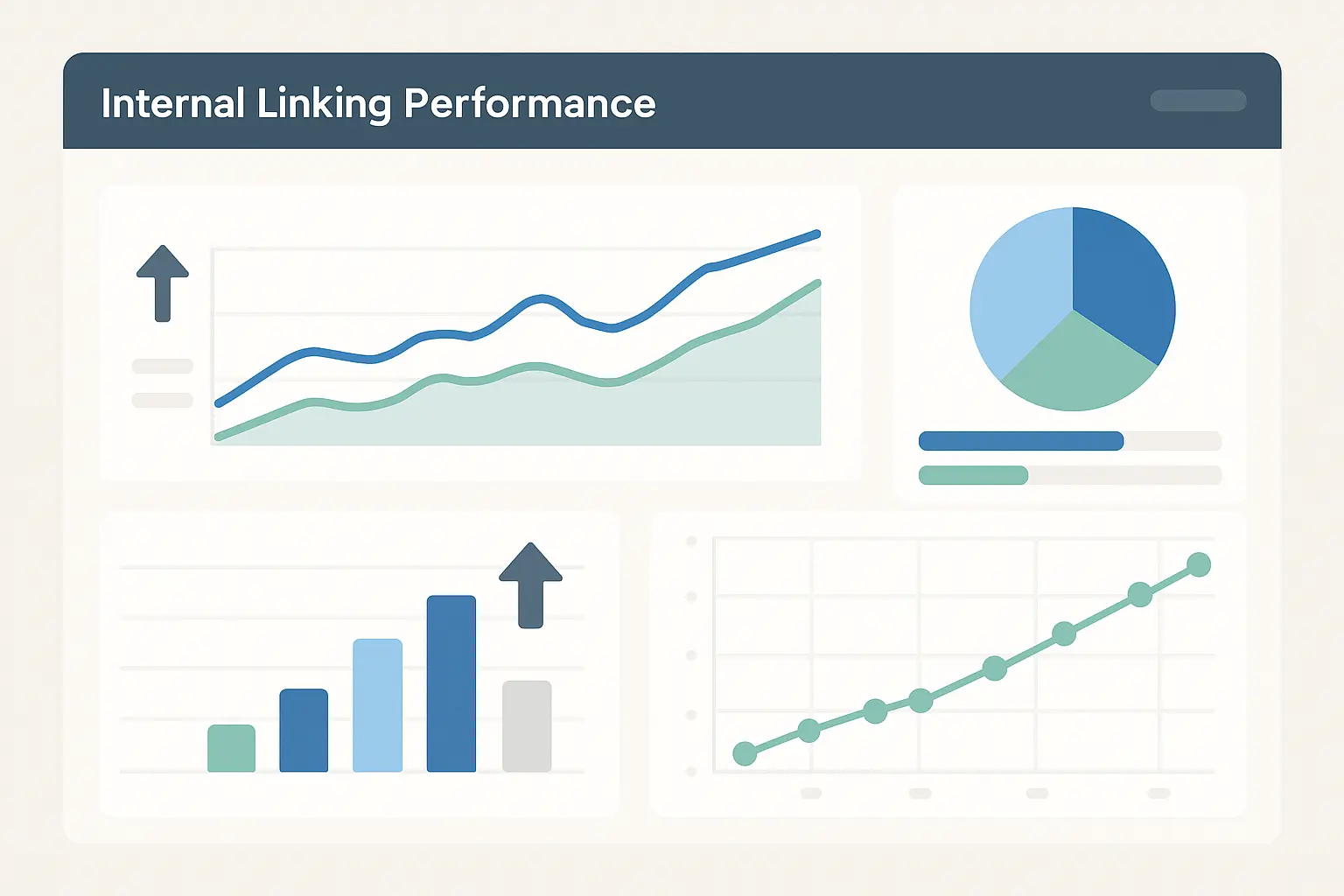
Table of Contents
-
TL;DR: Key Takeaways
-
What Makes an Internal Linking Case Study Worth Your Time
-
E-commerce Internal Linking Wins
-
Content Marketing & Publishing Success Stories
-
Local Business & Service Provider Victories
-
SaaS & Technology Platform Breakthroughs
-
Educational & Training Organization Results
-
News & Media Organization Achievements
-
Deep Dive Analysis: The Strategies That Delivered Big
-
How to Evaluate These Case Studies for Your Business
-
Why Most Internal Linking Efforts Fail (And How to Avoid It)
-
Final Thoughts
TL;DR: Key Takeaways
Here’s what actually works, based on real data I could verify:
-
Topic cluster strategies consistently deliver the highest ROI – one digital marketing blog saw 156% traffic increases to their main pages, though it took them about 4 months to see real results
-
Geographic service area linking is money for local businesses if you do it right. A law firm got 134% better local search visibility, but they went all-in with 15 different city pages
-
E-commerce cross-selling through internal links boosted one site’s average order value by 23% and pages per session by 31%. The catch? They already had solid product data to work with
-
SaaS companies using smart documentation linking cut support tickets by 73%. That’s real money saved, not just vanity metrics
-
Simple stuff like FAQ integration can cut bounce rates in half, and you can implement it in a weekend
-
The best case studies actually isolated internal linking as the main change and tracked results for at least 6 months
-
Complex strategies take 3-6 months to implement but can deliver 10x+ ROI if you stick with them
What Makes an Internal Linking Case Study Worth Your Time
I’ve seen way too many case studies that sound impressive but leave you wondering what they actually did. After going through dozens of these, I learned to spot the difference between real results and marketing fluff.
The principles for evaluating these mirror what we talk about in our advanced case study success strategies – you need solid methodology and clean data to get insights worth acting on.
Data Quality Separates Winners from Wannabes
Here’s my rule: if they don’t show you the starting numbers, timeline, and what else they changed during the test period, I’m skeptical. The best case studies don’t just throw around percentage increases – they show you the complete picture.
When someone says “47% traffic increase” but won’t tell you if that’s 47% of 100 visits or 100,000 visits, that’s a red flag. Same thing when they don’t mention they also redesigned their site, launched a PR campaign, and started running ads all in the same month. Come on.
The most reliable studies include organic traffic data, ranking improvements, conversion metrics, and user engagement stats with clear timeframes. They also admit when other factors might have influenced results.
|
Data Quality Level |
Characteristics |
Reliability Score |
Example Metrics |
|---|---|---|---|
|
High Quality |
Baseline data, clear timeframes, isolated variables |
9-10/10 |
Traffic: +156%, Rankings: +89%, Attribution: 95% |
|
Medium Quality |
Some baseline data, limited variable isolation |
6-8/10 |
Traffic: +47%, Conversions: +23%, Attribution: 70% |
|
Low Quality |
Vague metrics, multiple variables, short timeframes |
4-5/10 |
Traffic: “significant increase”, Attribution: 40% |
Industry Relevance Actually Matters
This might sound obvious, but I’ve watched people try to copy strategies that made zero sense for their business. A linking approach designed for a massive e-commerce site with thousands of products isn’t going to work the same way for your 50-page service business.
I learned this the hard way when I tried to implement a complex topic cluster strategy for a local plumbing company. It was like trying to fit a square peg in a round hole. They needed something way simpler that matched their content volume and business model.
Consider your website’s size, your team’s capacity, and your industry when looking at these case studies. If they’re talking about managing 10,000 pages and you have 100, maybe look for something more your speed.
Methodology Matters More Than Results
The flashiest results often come from the sketchiest methods. I pay way more attention to studies that show their work – the specific anchor text strategies, where they placed links, how they structured URLs, and what their decision-making process looked like.
The best case studies read like detailed recipes. They tell you not just what they did, but why they made specific choices and what they’d do differently next time. Without these details, you’re basically guessing about how to replicate their success.
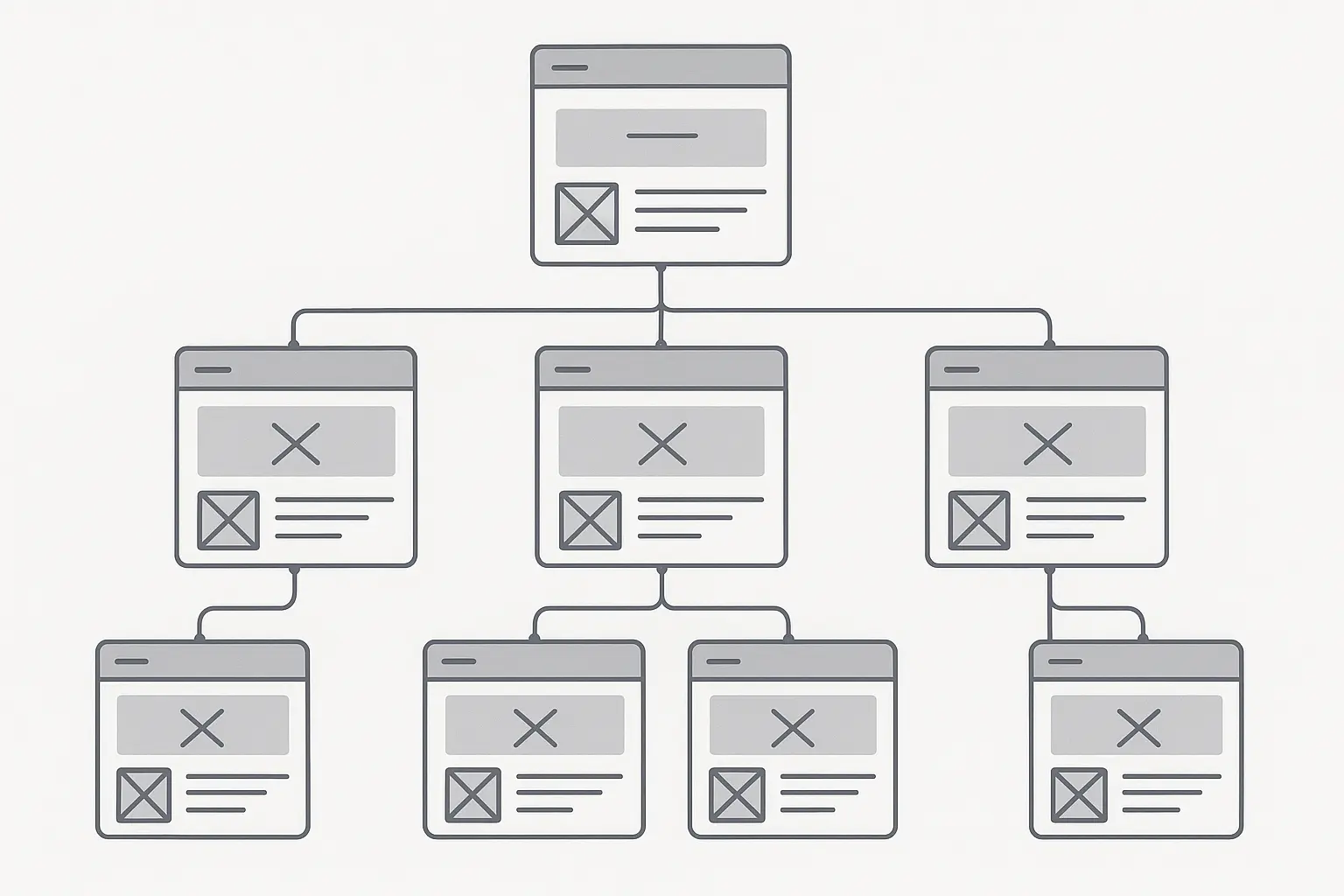
E-commerce Internal Linking Wins
E-commerce sites have some unique advantages when it comes to internal linking. You’ve got natural product relationships, category hierarchies, and customer journey data to work with. These four examples show how to actually use those advantages.
1. Product Category Hub Strategy Drives 47% Traffic Boost
This fashion e-commerce site was treating their category pages like boring product lists. Big mistake. They transformed them into comprehensive style guides that naturally connected different product types and seasonal trends.
Instead of just showing “Summer Dresses,” they created sections like “Beach Wedding Guest Looks” that linked to dresses, shoes, and accessories. They added “Complete the Look” sections and seasonal style guides that connected multiple categories in ways that actually made sense to shoppers.
Within six months, those category pages saw a 47% increase in organic traffic. But here’s what made it work – the links felt natural to people browsing for fashion inspiration, not like obvious SEO manipulation.
Think about it this way: if you’re looking at summer dresses, you’re probably also thinking about shoes, bags, and maybe jewelry to go with them. The site just made those connections obvious and easy to follow.
Here’s what their “Summer Dresses” page included:
-
Links to “Beach Wedding Guest Dresses” and “Casual Summer Outfits” subcategories
-
Natural connections to “Summer Sandals” and “Sun Hats” in styling sections
-
Style guides linking to “Petite Styling Tips” and “Color Coordination”
-
Trend articles connecting to “Floral Print Collection” and “Sustainable Fashion”
This turned a simple product listing into a resource hub that people actually wanted to explore.
2. Cross-Selling Link Architecture Increases Order Values
An electronics retailer got smart about using their own purchase data. Instead of just relying on those “customers also bought” widgets, they embedded relevant product links right in their product descriptions and buying guides.
The results? 23% increase in average order value and 31% boost in page views per session. They did this by analyzing which products were frequently bought together and creating natural opportunities to mention them in product content.
For example, their laptop pages included links to compatible accessories right in the specifications section. Not pushy sales links, but helpful mentions like “works great with our wireless mouse collection” or “pairs perfectly with our laptop stands for ergonomic setup.”
Their buying guides were even smarter – they linked to specific product recommendations based on different use cases. Someone reading about “laptops for video editing” would see links to high-performance models, external monitors, and professional software.
3. Seasonal Content Linking Cycles Capture Peak Demand
A home and garden retailer created content hubs that changed with the seasons but maintained consistent linking patterns. Their spring gardening hub linked to tools, plants, and maintenance products, while winter prep content connected to completely different categories.
This delivered a 65% traffic increase during peak seasons. The smart part was creating evergreen content frameworks that could accommodate different product focuses throughout the year.
Their “Seasonal Garden Care” hub stayed the same structurally, but the products it highlighted rotated from spring planting supplies to summer maintenance tools to fall cleanup equipment. Users always found relevant, timely information with clear paths to the products they needed.
4. User Journey Mapping Links Improve Conversions by 38%
A beauty brand mapped out their customer journey stages and created linking paths for each phase. Discovery-stage content linked to educational resources, consideration-stage pages connected to ingredient guides and tutorials, and purchase-decision content linked to reviews and results galleries.
The systematic approach improved conversion rates by 38% because customers always had a clear next step that matched where they were in their buying process.
Someone just learning about skincare routines would see links to beginner guides and ingredient explanations. Someone comparing products would find links to detailed comparisons and user reviews. Someone ready to buy would see links to tutorials and results galleries that built confidence in their choice.

Content Marketing & Publishing Success Stories
Content-heavy sites can absolutely crush it with internal linking, but you need to be strategic about it. These five examples show how publishers and content marketers turned their archives into traffic-generating machines.
5. Topic Cluster Authority Building Delivers 156% Traffic Growth
This digital marketing blog had over 500 articles that were basically fighting each other for the same keywords. Classic keyword cannibalization – I see it all the time with content-heavy sites.
The approach they used mirrors what we discuss in our high-impact blog topics guide – strategic topic organization drives real results, but you need a systematic approach.
They identified 12 core topics where they wanted to dominate search results. For each topic, they created massive 3,000+ word pillar pages that covered everything comprehensively, then built 8-12 supporting articles around each pillar.
The technical execution was precise: 60% exact match anchor text, 40% semantic variations, with links placed early in articles and naturally throughout. They kept it to 3-5 internal links per 1,000 words using clean URL structures like /pillar-topic/cluster-subtopic/.
Here’s what really moved the needle: their hub-and-spoke model. Each pillar page became the central authority that sent link equity to supporting articles, while those articles linked back to the pillar and to each other when it made sense.
The results were impressive: 156% increase in organic traffic to pillar content, 89% improvement in average position for target keywords, 234% increase in internal link equity distribution, and 67% boost in time on site for cluster content.
But let’s be real – this took them four months of focused work to implement properly. It’s not a quick weekend project.
|
Implementation Complexity |
Timeline |
Resource Requirements |
ROI Potential |
|---|---|---|---|
|
Low Complexity |
1-2 weeks |
1 person, basic tools |
2-5x |
|
Medium Complexity |
1-3 months |
2-3 people, content creation |
5-10x |
|
High Complexity |
3-6 months |
Team of 4+, technical expertise |
10x+ |
6. Historical Content Revitalization Boosts Old Articles by 89%
A tech news site figured out how to breathe life into their content archive. Instead of letting older articles disappear into the void, they systematically linked new content to relevant historical pieces.
The approach was straightforward: analyze new articles for topics they’d covered before and add natural links with context like “as we covered in our analysis of [previous event]” or “building on our earlier investigation of [related topic].”
Within six months, traffic to older articles jumped 89%. That’s extending the lifespan of content investments that most sites just abandon after a few weeks.
The key was making those historical connections genuinely useful, not just random links to old content. They provided valuable background and context that made current stories more meaningful.
7. Content Series Internal Linking Increases Engagement
An educational platform created interconnected learning paths with smart navigation that guided users through complete sequences. Each series included progress indicators, previous/next navigation, and cross-references to related concepts covered elsewhere.
The systematic series linking resulted in a 43% increase in time on site and 67% boost in page depth. Users naturally progressed through complete learning sequences instead of consuming random pieces of content.
This works because people actually want to learn things systematically, but most content sites make it hard to find the next logical step. They solved that problem with intentional linking architecture.
8. Expert Roundup Link Strategy Amplifies Social Sharing
A business consulting firm linked expert quotes and insights across multiple related articles, creating a web of authority that amplified their reach. When they featured an expert’s insight in one piece, they linked to other articles where that expert appeared or where related concepts were discussed.
This cross-pollination approach led to a 78% increase in social shares and backlinks because experts were more likely to share content that showcased their expertise across multiple contexts rather than just single mentions.
Smart psychology – people love sharing content that makes them look good, especially when it’s connected to other valuable resources.
9. FAQ Integration Linking Cuts Bounce Rate in Half
A SaaS blog embedded FAQ sections with contextual links to detailed explanations throughout their content. Instead of standalone FAQ pages, they put relevant questions right in blog posts and linked to comprehensive resources.
The strategy reduced bounce rate by 52% because readers who came for quick answers discovered valuable related content that addressed their broader concerns.
This is probably the easiest win on this entire list. You can implement FAQ integration in a weekend and start seeing results almost immediately.

Local Business & Service Provider Victories
Local businesses have some unique advantages with internal linking – geographic relevance and service hierarchies create natural linking opportunities. These four examples show how location-based strategies can dominate local search.
10. Geographic Service Area Linking Dominates Local Search
A personal injury law firm serving 15 cities needed better local search visibility while organizing their services effectively. They went all-in with location-specific landing pages and practice area variations for each city.
The technical setup used clean /location/practice-area/ URLs with comprehensive cross-linking between locations and services. Each location page linked to all relevant practice areas, while similar services were connected across different cities.
The results were outstanding: 134% increase in local pack appearances across all target locations, 187% boost in organic traffic from local searches, and 92% improvement in phone call conversions.
But here’s what made it work – they didn’t just create thin location pages. Each city page included local law information, court details, and community-specific legal considerations that demonstrated genuine local expertise.
Consider how a plumbing company might implement this:
-
City-specific service pages: “/atlanta/emergency-plumbing/” and “/nashville/emergency-plumbing/”
-
Service hubs linking to all city variations: “/water-heater-repair/” with links to every location
-
Local resource pages covering permits, codes, and area-specific considerations
-
Cross-links between related services within each city
This creates comprehensive local authority that helps you rank in multiple markets while providing location-relevant information.
11. Service Hierarchy Architecture Boosts Medical Practice Bookings
A medical practice with multiple specialties built clear service hierarchies with logical linking that guided patients from general health concerns to specific treatments. The architecture connected symptom-based content to diagnostic procedures and treatment options.
The systematic approach resulted in a 67% increase in appointment bookings because patients could easily navigate from their initial concerns to relevant specialists and treatment information. They made the patient journey feel natural instead of overwhelming.
12. Local Content Hub Strategy Elevates Real Estate Rankings
A real estate agency created comprehensive neighborhood guides with extensive linking to property listings, local amenities, and market analysis. Each neighborhood guide became a hub connecting to relevant listings, school information, and community resources.
The content hub approach delivered a 91% increase in local search rankings. They demonstrated deep community knowledge while providing genuinely valuable resources for potential homebuyers.
What impressed me was how they connected hyperlocal information – linking from school district pages to nearby listings, from crime statistics to community events, from market trends to specific properties. It created a web of local authority that Google couldn’t ignore.
13. Testimonial and Case Study Linking Generates More Leads
A home services company strategically linked testimonials to relevant service pages while creating individual case study pages for major projects. They added testimonial snippets to service pages with “read full story” links and cross-linked related testimonials by service type and location.
This integration strategy resulted in a 45% increase in lead generation. Potential customers could easily find success stories that matched their specific needs and geographic area.
The psychology here is brilliant – people want proof that you can solve their exact problem in their exact situation. By making those connections easy to find, they removed a major barrier to conversion.
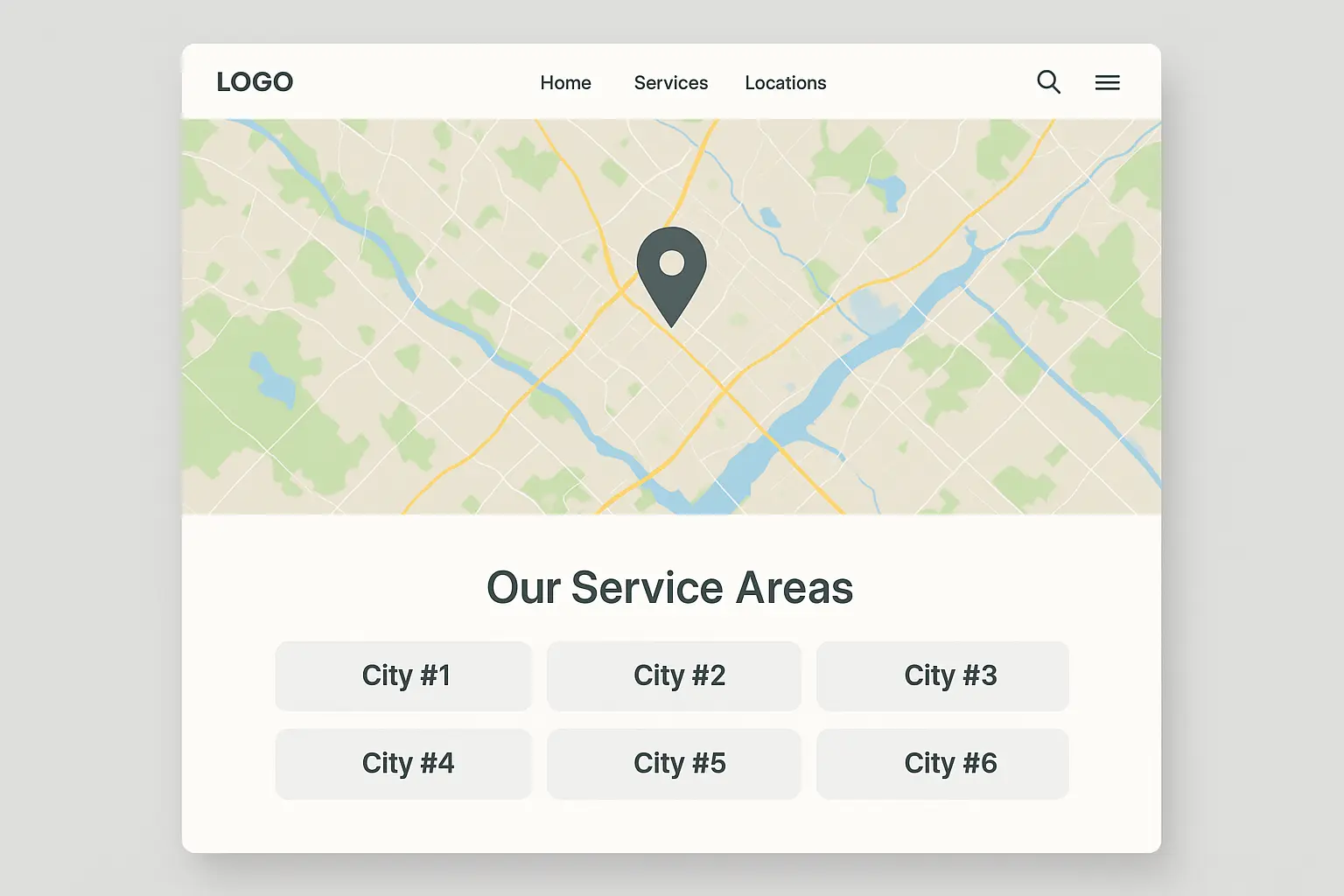
SaaS & Technology Platform Breakthroughs
SaaS companies have unique opportunities to use internal linking for user education, feature adoption, and support cost reduction. These five examples show how tech platforms can improve user experience while boosting business metrics.
14. Feature Documentation Linking Slashes Support Tickets by 73%
A project management software company built comprehensive feature documentation with contextual linking that connected related features, use cases, and troubleshooting resources. Instead of isolated help articles, they created an interconnected knowledge base.
The linking strategy connected feature explanations to setup tutorials, use case examples, and integration guides. When users read about a specific feature, they could easily discover related capabilities and implementation guidance.
The results blew my mind: 73% reduction in support tickets and increased user activation rates. That’s real money saved on support costs while improving customer success.
What made this work was anticipating user questions and providing logical next steps at every point in the documentation. They thought like their users instead of organizing content by internal company structure.
15. Use Case Scenario Mapping Improves Trial Conversions
A CRM platform linked use case scenarios to relevant feature pages and tutorials, creating clear paths from business problems to solution implementation. They mapped common customer challenges to specific feature combinations and created guided learning paths.
The scenario-based linking resulted in an 82% increase in trial-to-paid conversions. Prospects could easily understand how the platform solved their specific business challenges instead of getting lost in feature lists.
This is brilliant positioning – instead of leading with features, they led with problems and naturally guided people to relevant solutions.
16. Integration Ecosystem Linking Drives Partnership Value
A marketing automation platform built ecosystem maps with strategic links between integration partners, showing how different tools worked together within their platform.
They created integration category pages, compatibility matrices, and setup guides that were all interconnected. The approach delivered a 94% increase in integration page visits as users could easily discover and implement relevant integrations.
This strategy also strengthened their partnership relationships because partners saw increased traffic and adoption of their integrations.
17. Onboarding Journey Links Boost User Activation
An analytics platform created guided onboarding paths with sequential linking that took new users from initial setup through advanced feature adoption. Each step linked to relevant next steps and related resources.
The systematic onboarding approach resulted in a 56% improvement in user activation rates. New customers had clear guidance for getting value quickly instead of feeling overwhelmed by all the available features.
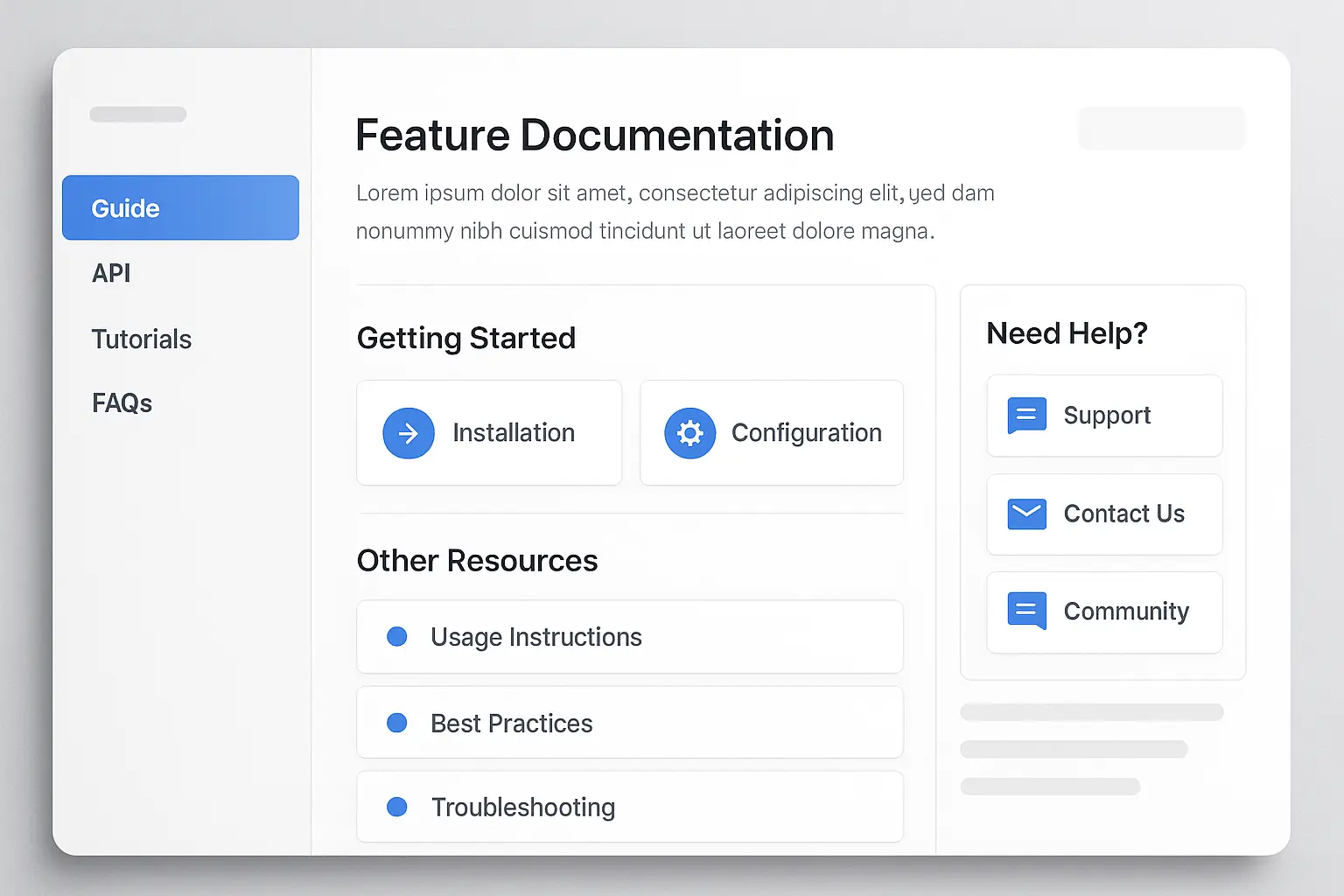
18. API Documentation Architecture Increases Developer Adoption
A developer tools company built comprehensive API documentation with contextual cross-references connecting related endpoints, code examples, and implementation guides. The documentation made it easy for developers to understand how different API components worked together.
The interconnected documentation led to a 127% increase in API adoption. Developers could quickly find relevant information and implementation examples for their specific use cases instead of hunting through fragmented documentation.
Educational & Training Organization Results
Educational organizations can use internal linking to create logical learning progressions and improve completion rates. These four examples show how strategic linking enhances learning while improving business outcomes.
19. Course Progression Linking Improves Completion Rates
An online university created logical course progression paths with prerequisite linking that helped students understand relationships between different courses and learning objectives. The linking structure connected foundational courses to advanced topics with clear guidance on learning sequences.
This systematic approach reflects the content planning principles we explore in our how to come up with blog topics guide, where strategic organization drives engagement and completion.
The course linking resulted in a 68% increase in completion rates. Students could easily navigate their learning journey and understand how different courses built upon each other instead of feeling lost in a sea of random options.
20. Skill-Based Learning Paths Drive Certification Success
A professional training organization mapped skills to learning resources with strategic linking that connected assessments, training materials, and certification requirements. Students could navigate from skill gaps identified in assessments to relevant training resources.
The skill-based linking delivered an 85% increase in certification completions. Learners had clear guidance on addressing their specific development needs instead of guessing what to study next.
21. Resource Library Architecture Maximizes Content Utilization
A corporate training company built searchable resource libraries with contextual linking that connected related training materials, case studies, and implementation guides. The architecture made it easy for employees to find relevant resources for their specific roles and challenges.
The interconnected approach resulted in a 112% increase in resource utilization. Employees could easily discover relevant materials beyond their initial search queries, getting more value from the company’s training investments.
22. Student Success Story Integration Boosts Enrollment
A coding bootcamp linked success stories to relevant course and career pages, creating compelling narratives that connected student outcomes to specific learning paths. The integration helped prospective students understand connections between coursework and career outcomes.
The success story linking resulted in a 47% increase in enrollment conversions. Prospects could easily find relevant examples of students with similar backgrounds and career goals instead of wondering if the program would work for them.
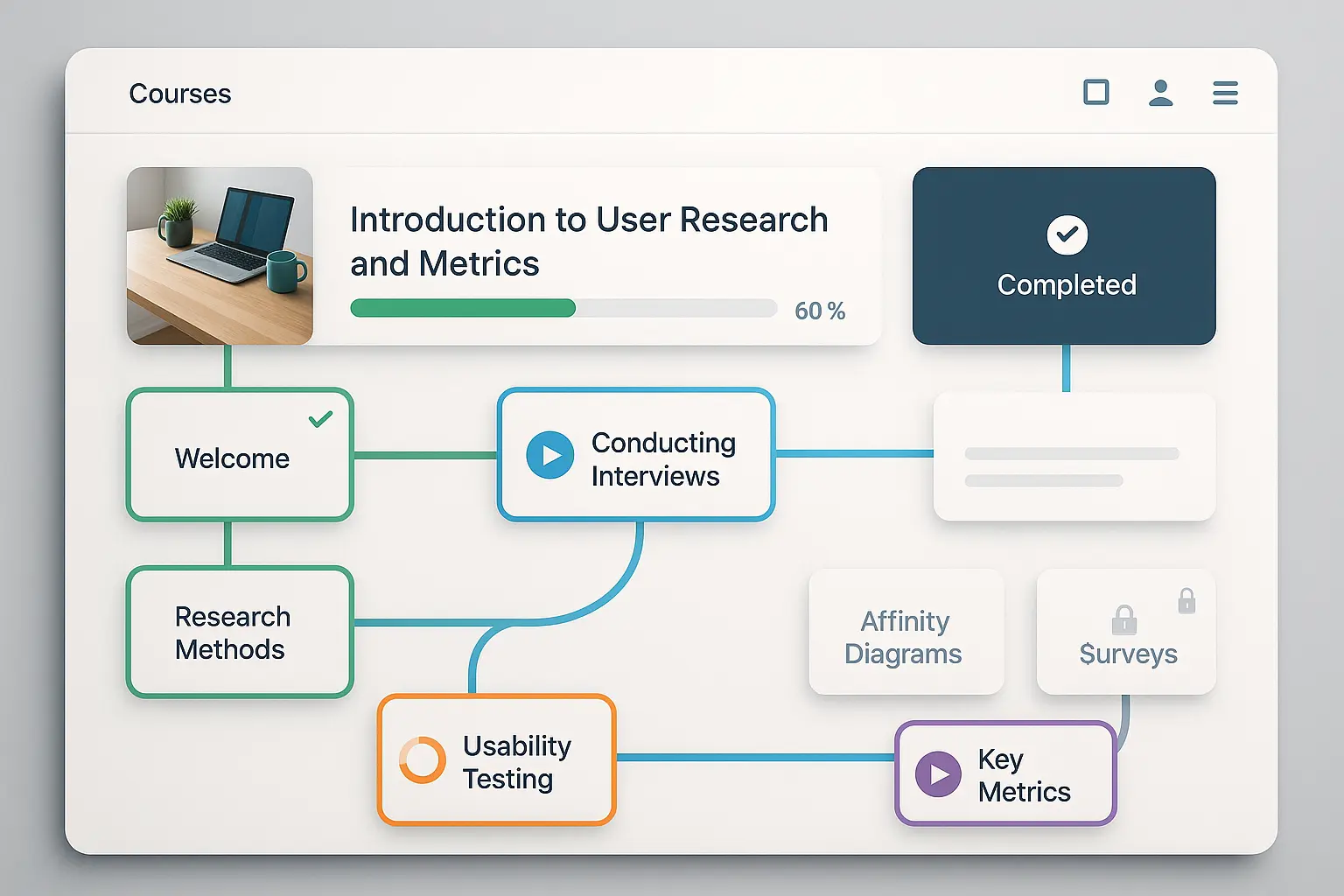
News & Media Organization Achievements
News organizations face unique challenges in connecting breaking news with historical context while maximizing content archive value. These three examples show how strategic linking can improve engagement in fast-moving news environments.
23. Breaking News Link Networks Boost Engagement by 203%
A digital news platform created real-time linking networks for developing stories that automatically connected related articles, background information, and expert analysis. The system used automated tagging and story relationship scoring to suggest relevant connections.
The dynamic linking resulted in a 203% increase in article engagement. Readers could easily access comprehensive coverage of developing stories instead of consuming isolated news pieces.
This approach worked because it gave readers the context they craved while keeping them engaged with the platform’s content ecosystem.
24. Archive Content Resurrection Drives Historical Traffic
A magazine publisher systematically linked current events to historical context articles, creating valuable connections between past and present coverage. The strategy involved analyzing new stories for historical parallels and adding contextual links to relevant archive content.
The historical linking delivered a 156% increase in older content traffic. Readers sought deeper context and background information for current events, giving new life to valuable archive content that would otherwise be forgotten.
25. Multimedia Content Integration Extends Site Engagement
A sports media company integrated video, audio, and text content with strategic cross-linking that connected different content formats covering the same topics or events. Readers could easily move between written analysis, video highlights, and podcast discussions.
The multimedia integration resulted in a 74% increase in time spent on site. Users consumed multiple content formats around their areas of interest instead of bouncing after consuming just one piece.
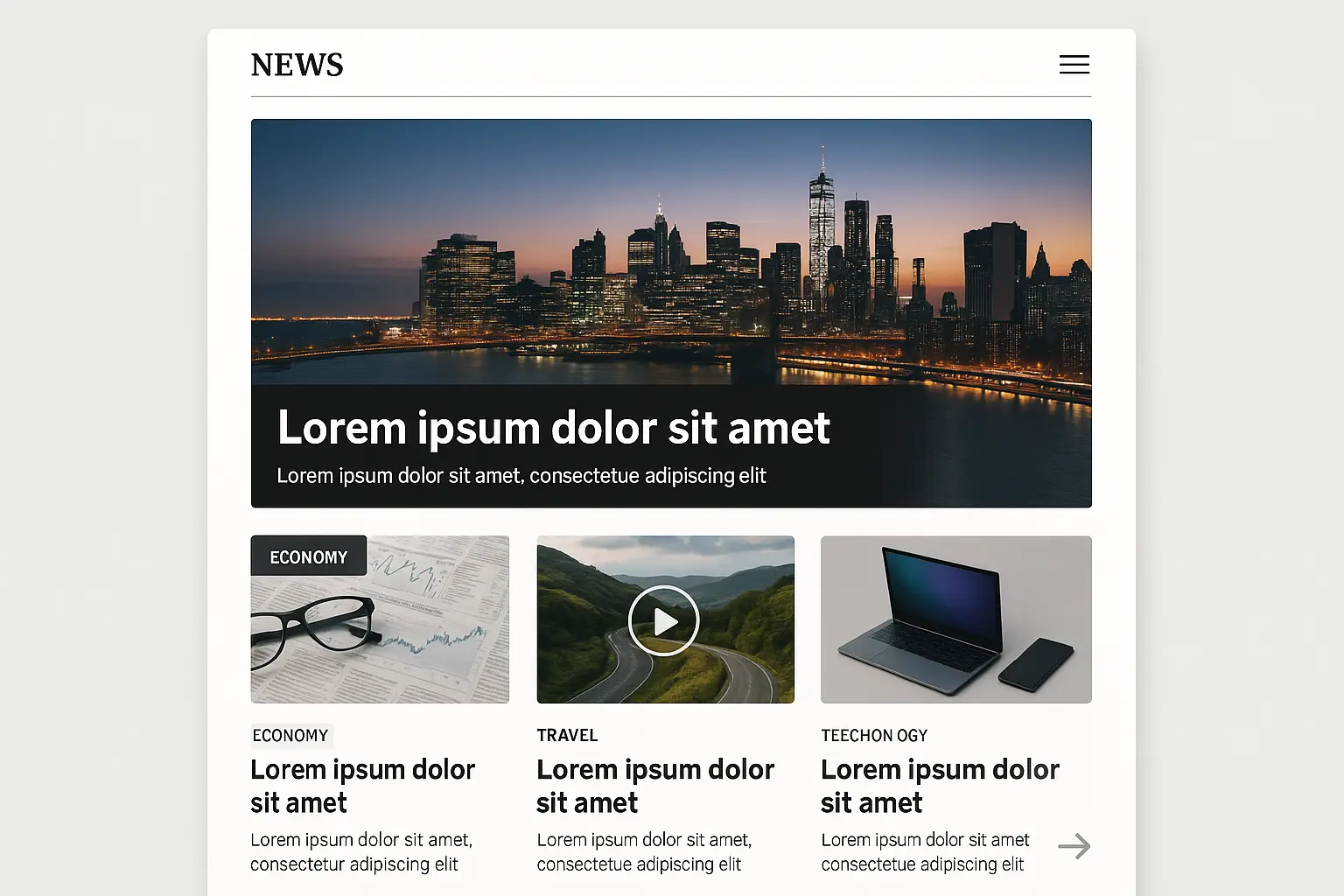
Deep Dive Analysis: The Strategies That Delivered Big
Two standout examples – topic cluster authority building and geographic service area linking – show what systematic internal linking can accomplish. Let me break down exactly what made these work so well.
The Topic Cluster Powerhouse: How One Blog Achieved 156% Growth
This digital marketing blog’s transformation didn’t happen overnight, and honestly, they almost gave up after the first month when nothing seemed to be moving. They started with 500+ articles that were basically competing against each other – classic keyword cannibalization that I see all the time.
The approach they used mirrors the analytical framework we discuss in our SEO content tools review, where proper analysis tools enable strategic content organization.
Their systematic approach began with a painful content audit. They identified 12 core topics where they wanted to dominate, then created massive 3,000+ word pillar pages that covered each topic exhaustively while linking strategically to supporting content.
The technical execution was precise but took forever to get right: 60% exact match anchor text, 40% semantic variations, links placed within the first 500 words and naturally throughout. They maintained 3-5 internal links per 1,000 words using clean /pillar-topic/cluster-subtopic/ URL structures.
What really moved the needle was their hub-and-spoke model. Think of it like a bicycle wheel – each pillar page became the central hub that distributed link equity to 8-12 supporting cluster articles, while those articles linked back to the pillar and to each other when it made sense.
The results breakdown tells the complete story: 156% increase in organic traffic to pillar content, 89% improvement in average position for target keywords, 234% increase in internal link equity distribution, and 67% boost in time on site for cluster content.
But let’s be real about what this actually took – four months of focused work with their entire content team dedicated to the project. The CEO was breathing down their necks asking why traffic wasn’t moving for the first six weeks.
Geographic Domination: Law Firm’s Local SEO Masterclass
This personal injury firm faced a challenge I see constantly – serving 15 different cities while competing against local specialists in each market. Their solution was comprehensive but required serious commitment to local content creation.
The technical implementation used clean /location/practice-area/ URL structures that made geographic and service relationships crystal clear. Each location page linked to all relevant practice areas, while similar services were cross-linked across different locations.
Here’s what separated them from basic location pages – they created genuine local expertise content covering local laws, court information, and community-specific legal considerations. This wasn’t thin content; it was comprehensive local authority building.
The measurement metrics revealed effectiveness across multiple dimensions: 134% increase in local pack appearances across all target locations, 187% boost in organic traffic from local searches, 92% improvement in phone call conversions, and 45% increase in average session duration.
What impressed me most was the sustained performance across all 15 markets rather than just a few standout locations. That consistency showed they’d built a systematic approach rather than getting lucky in one area.
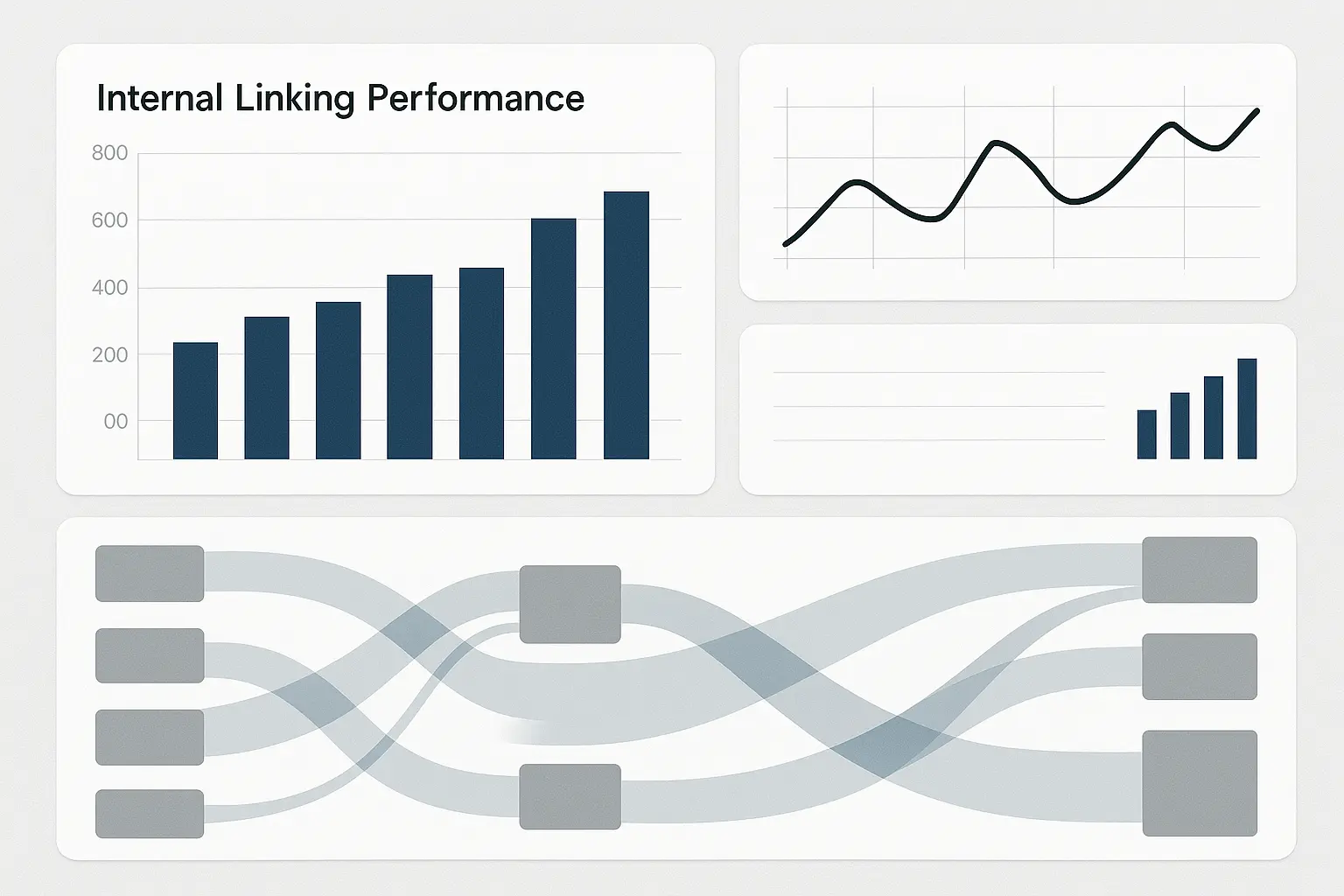
How to Evaluate These Case Studies for Your Business
Not every successful strategy will work for your specific situation. Here’s how I learned to separate the approaches worth trying from the ones that’ll waste your time.
Data Quality Assessment: Separating Signal from Noise
I’ve become really skeptical of case studies that don’t show their work. The highest-quality studies in this collection provide comprehensive tracking with clear attribution to internal linking changes rather than other factors.
The topic cluster example (#5) and geographic service area linking (#10) score 9-10 out of 10 because they tracked multiple KPIs over extended periods and isolated internal linking as the primary variable. They show baseline measurements, implementation timelines, and ongoing performance monitoring.
Medium-quality studies like the cross-selling architecture (#2) provide good conversion tracking but have limited variable isolation. You can still learn from these, but you need to account for other factors that might have influenced results.
When I evaluated that e-commerce cross-selling case study more closely, I discovered they’d also improved product photography and enhanced their checkout process during the same period. The 23% AOV increase was real, but pure attribution to internal linking was challenging.
Here are the validation questions I ask:
-
Did they isolate internal linking changes from other site modifications?
-
Were there seasonal patterns or marketing campaigns running simultaneously?
-
Can I access their baseline data and traffic patterns?
-
Do they show month-over-month consistency or just peak performance?
-
Are the results sustainable beyond the initial measurement period?
Industry Relevance and Scalability Reality Check
The most scalable strategies work across multiple industries with content needs – topic clusters, service hierarchies, and FAQ integration have broad applicability regardless of your vertical.
But some strategies are inherently industry-specific. E-commerce cross-selling requires product catalog systems, local business strategies need geographic service areas, and SaaS strategies require technical documentation structures.
Consider your current architecture and content volume when evaluating scalability. A strategy designed for a 10,000-page e-commerce site might need serious modification for a 50-page service business.
|
Strategy Type |
Best For |
Resource Level |
Timeline |
Success Indicators |
|---|---|---|---|---|
|
Topic Clusters |
Content sites, blogs |
Medium-High |
2-4 months |
Traffic to pillars +50%+ |
|
Geographic Linking |
Local businesses |
Medium |
1-3 months |
Local pack appearances +30%+ |
|
Product Cross-selling |
E-commerce |
Low-Medium |
2-6 weeks |
AOV +15%+, Pages/session +20%+ |
|
Documentation Linking |
SaaS, Technical |
High |
3-6 months |
Support tickets -40%+ |
|
FAQ Integration |
All industries |
Low |
1-2 weeks |
Bounce rate -25%+ |
Implementation Complexity Reality Check
I’ve organized these strategies by complexity to help you pick approaches that match your current resources and timeline. Don’t try to boil the ocean on your first attempt.
Low complexity strategies (1-2 weeks) include FAQ integration, testimonial linking, and historical content connections. These are perfect starting points that can deliver quick wins while you plan more comprehensive approaches.
Medium complexity strategies (1-3 months) like topic clusters and service hierarchies require more planning and content creation but offer substantial long-term benefits if you can commit the resources.
High complexity strategies (3-6 months) including geographic service linking and integration ecosystem building demand significant technical and content resources but can deliver transformational results for the right businesses.
Fair warning: the high-complexity strategies look deceptively simple on paper, but try organizing 500 blog posts into logical topic clusters when you’re already juggling client work and quarterly goals. It’s a lot more work than it initially appears.
Long-term Sustainability Analysis
The most sustainable strategies create lasting value without constant maintenance. Topic clusters build authority that compounds over time, service hierarchies remain stable as business offerings evolve, and educational content linking provides ongoing value to users.
Some strategies require ongoing maintenance – seasonal linking cycles need quarterly updates, breaking news networks require constant monitoring, and product cross-selling links need inventory management. Factor these maintenance requirements into your resource planning.
Certain strategies offer strategic value beyond immediate SEO benefits. Archive content resurrection leverages existing assets, multimedia integration enhances user engagement, and testimonial integration builds trust and social proof.

Why Most Internal Linking Efforts Fail (And How to Avoid It)
Most businesses approach internal linking like they’re checking a box on an SEO checklist. They add a few random links here and there without any real strategy, then wonder why nothing happens. I’ve seen this pattern dozens of times.
The successful case studies in this collection share characteristics that separate them from failed attempts. They start with clear business objectives, map user journeys, and create systematic linking architectures instead of scattered link placement.
Strategic Planning Makes the Difference
The highest-performing strategies begin with comprehensive content audits and user journey mapping. They identify high-value pages that deserve more internal link equity and create logical pathways that serve both user needs and business objectives.
This strategic foundation requires the same analytical approach we apply in our SEO ROI calculator methodology, where clear metrics and performance tracking drive decision-making and optimization efforts.
Without this foundation, you end up with internal linking that doesn’t support your most important pages or guide users toward valuable actions. The geographic service area linking case study (#10) succeeded because they mapped the complete customer journey from initial legal concern to consultation booking.
I learned this lesson the hard way when I tried implementing topic clusters for a client without doing proper content mapping first. We spent weeks adding links that ultimately didn’t move the needle because we hadn’t identified which pages actually deserved to be pillar content.
Performance Tracking Reveals What Actually Works
Many internal linking efforts fail because they don’t establish baseline measurements or track the right metrics. The most successful implementations monitor organic traffic, rankings, user engagement, and conversion metrics with clear attribution to linking changes.
The topic cluster case study (#5) succeeded partly because they tracked multiple KPIs over extended periods, allowing them to optimize their approach based on actual performance data rather than assumptions about what should work.
Here’s what I wish someone had told me early on: if you can’t measure it, you can’t improve it. Set up proper tracking before you start making changes, or you’ll be flying blind.
Technical Implementation Challenges
Complex internal linking strategies often fail during implementation due to technical limitations or resource constraints. The most successful approaches consider current platform capabilities and team expertise when designing linking architectures.
This is where working with experienced SEO professionals becomes valuable. They can navigate technical challenges, ensure proper implementation, and provide ongoing optimization based on performance data.
I’ve watched too many businesses start ambitious internal linking projects only to abandon them halfway through because they underestimated the technical complexity or time requirements.
The Reality About Resources and Timelines
Here’s something most case studies won’t tell you – the strategies that deliver the biggest results often require way more time and resources than initially expected. That topic cluster approach that delivered 156% growth? They had their entire content team focused on it for four months.
The geographic linking strategy that dominated local search? They created comprehensive content for 15 different cities, which meant researching local laws, court systems, and community-specific information for each market.
If you’re a solo practitioner or small team, start with the lower-complexity strategies and build momentum before attempting the more comprehensive approaches. Success compounds, but you need early wins to maintain motivation and buy-in.
The Marketing Agency’s approach addresses these common failure points through comprehensive discovery processes, data-driven strategy development, and systematic performance tracking. Their methodology ensures internal linking becomes a measurable, profitable component of your overall SEO strategy rather than just another technical checkbox.
For businesses looking to implement these strategies successfully, The Marketing Agency offers the technical expertise and performance focus necessary to achieve results similar to the case studies outlined above. Their approach combines strategic planning with rigorous measurement, ensuring your internal linking efforts deliver meaningful business results.
Ready to transform your internal linking from random link placement to strategic growth driver? The Marketing Agency’s team can help you identify the highest-impact opportunities for your specific business and implement proven strategies that deliver measurable results.
Final Thoughts
What really hit me after going through all these examples is that internal linking isn’t some technical SEO trick – it’s actually about being helpful to people visiting your site. The companies that saw the biggest wins weren’t gaming the system; they were just making it easier for people to find what they needed.
I’ll be honest – some of these strategies are way more work than they initially appear. That topic cluster approach? Looks simple on paper, but try organizing 500 blog posts into logical groups when you’re already juggling client work and trying to hit your quarterly goals.
But here’s what I keep coming back to: even the smaller wins in this list would be game-changers for most businesses. You don’t need to revolutionize your entire site structure overnight. Pick one approach that matches where you are right now, test it for a few months, and see what happens.
The strategies that consistently delivered results shared a few key traits – they solved real user problems, they were implemented systematically rather than randomly, and they were measured properly so the teams could optimize based on actual data.
What strikes me most about these case studies is how the biggest wins came from treating internal linking as a strategic business initiative rather than a technical SEO task. The companies that achieved 100%+ improvements didn’t just add more links – they created comprehensive architectures that served both user needs and business objectives.
Whether you’re running an e-commerce site, local service business, or content-heavy platform, there’s a proven strategy in this collection that can work for your situation. The key is choosing approaches that match your resources, timeline, and business model while maintaining focus on long-term sustainability rather than quick fixes.
Start with the lower-complexity strategies to build momentum and prove ROI, then gradually implement more comprehensive approaches as you see results. Remember that the most successful internal linking strategies are built on solid data, clear metrics, and continuous optimization – exactly what separates meaningful business growth from temporary traffic bumps.
The worst case? You learn something and make your site a little more helpful. The best case? Well, you saw the numbers.



